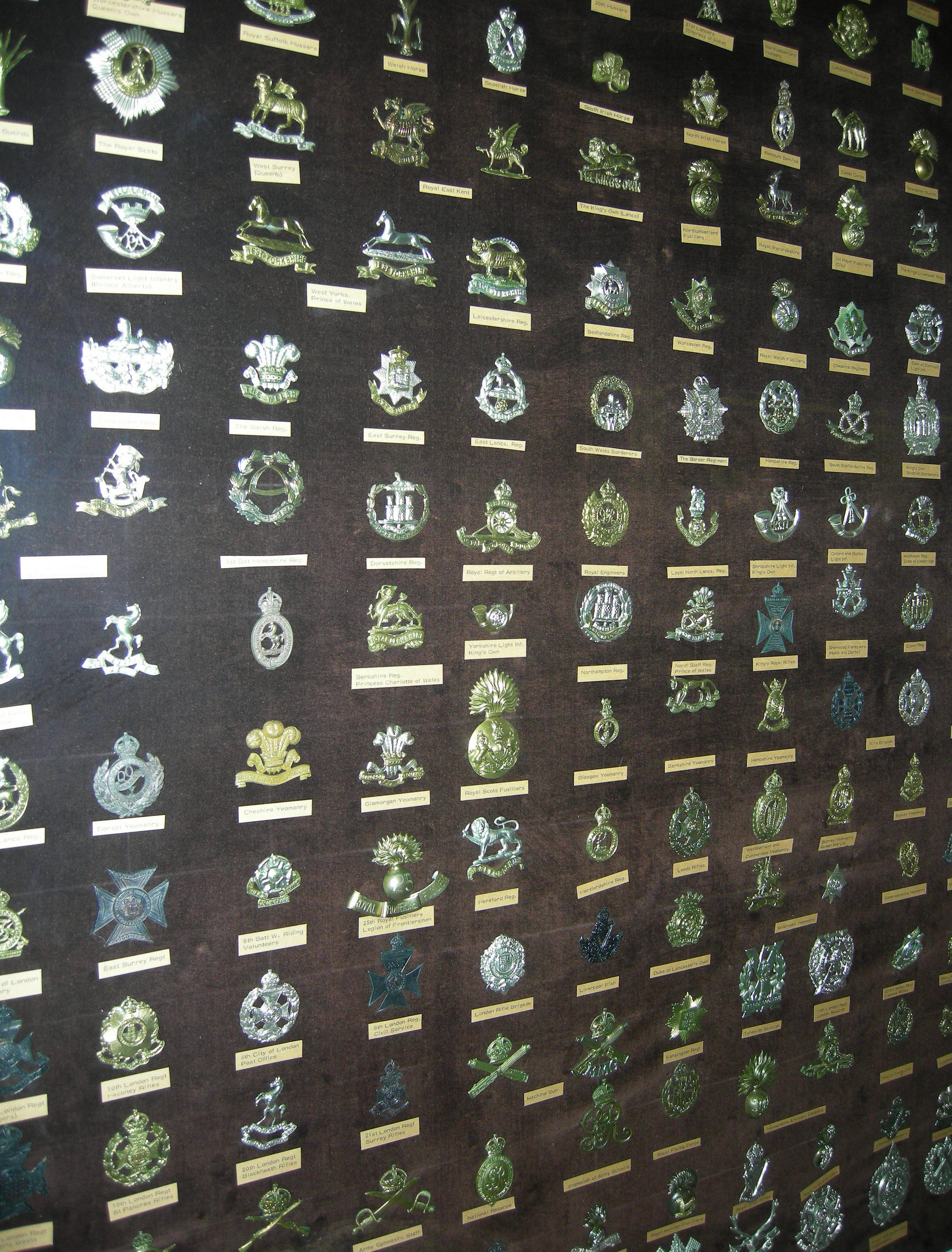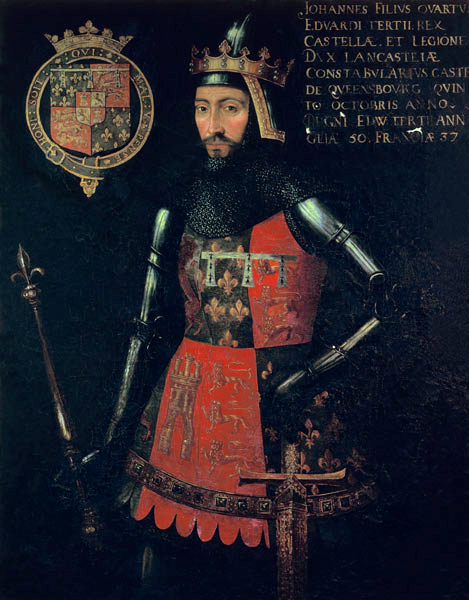|
Badges
A badge is a device or accessory, often containing the insignia of an organization, which is presented or displayed to indicate some feat of service, a special accomplishment, a symbol of authority granted by taking an oath (e.g., police and fire), a sign of legitimate employment or student status, or as a simple means of identification. They are also used in advertising, publicity, and for branding purposes. Badges can be made from metal, plastic, leather, textile, rubber, etc., and they are commonly attached to clothing, bags, footwear, vehicles, home electrical equipment, etc. Textile badges or patches can be either woven or embroidered, and can be attached by gluing, ironing-on, sewing or applique. Badges have become highly collectable: in the UK, for example, the Badge Collectors' Circle has been in existence since 1980. In the military, badges are used to denote the unit or arm to which the wearer belongs, and also qualifications received through military training, rank, ... [...More Info...] [...Related Items...] OR: [Wikipedia] [Google] [Baidu] |
Livery Badges
A heraldic badge, emblem, impresa, device, or personal device worn as a badge indicates allegiance to, or the property of, an individual, family or corporate body. Medieval forms are usually called a livery badge, and also a cognizance. They are para-heraldic, not necessarily using elements from the coat of arms of the person or family they represent, though many do, often taking the crest or supporters. Their use is more flexible than that of arms proper. Badges worn on clothing were common in the late Middle Ages, particularly in England. They could be made of base metal, cloth or other materials and worn on the clothing of the followers of the person in question; grander forms would be worn by important persons, with the Dunstable Swan Jewel in enamelled gold a rare survivor. Livery collars were also given to important persons, often with the badge as a pendant. The badge would also be embroidered or appliqued on standards, horse trappings, livery uniforms, and other belongi ... [...More Info...] [...Related Items...] OR: [Wikipedia] [Google] [Baidu] |
Chairman Mao Badge
Chairman Mao badge () is the name given to a type of Badge, pin badge displaying an image of Mao Zedong that was ubiquitous in the People's Republic of China during the active phase of the Cultural Revolution, from 1966 to 1971. The term is also used for badges associated with Mao that do not actually have a picture of him on them. It is estimated that several billion Chairman Mao badges were produced during the period of the Cultural Revolution. History Badges depicting Mao Zedong first appeared at the Chinese People's Anti-Japanese Military and Political College () at Yan'an during the 1930s. These early badges were homemade, usually being constructed out of the metal from used toothpaste tubes. By the 1940s badges showing Mao by himself or together with other important people were being produced in small numbers as commemorative medals or as awards for service to the Chinese Communist Party or to the People's Liberation Army, army. Unlike the later Cultural Revolution period ... [...More Info...] [...Related Items...] OR: [Wikipedia] [Google] [Baidu] |
Cap Badge
A cap badge, also known as head badge or hat badge, is a badge worn on uniform headgear and distinguishes the wearer's nationality and/or organisation. The wearing of cap badges is a convention commonly found among military and police forces, as well as uniformed civilian groups such as the Scouting, Boy Scouts, civil defence organisations, ambulance services (e.g. the St. John Ambulance Brigade), customs services, fire services etc. Cap badges are a modern form of Heraldic badge, heraldry and their design generally incorporates highly symbolic devices. Some badges that contain images of lions or other cats are sometimes informally referred to as cat badges. Instances in military forces British armed forces The British Armed Forces utilise a variety of metal and cloth cap badges on their headdress, generally on caps and berets. They are also worn on Uniforms_of_the_British_Armed_Forces#Turbans, Sikh turbans. British Army In the British Army (as well as other Commonwealth o ... [...More Info...] [...Related Items...] OR: [Wikipedia] [Google] [Baidu] |
Dunstable Swan Jewel
The Dunstable Swan Jewel is a gold and vitreous enamel, enamel brooch in the form of a swan made in England or France in about 1400 and now in the British Museum, where it is on display in Room 40. The jewel was excavated in 1965 on the site of Dunstable Friary in Bedfordshire, and is presumed to have been intended as a livery badge given by an important figure to his supporters; the most likely candidate was probably the future Henry V of England, who was Prince of Wales from 1399. The jewel is a rare medieval example of the then recently developed and fashionable white opaque enamel used in to almost totally encase an underlying gold form. It is invariably compared to the white hart badges worn by King Richard II of England, Richard II and by the angels surrounding the Virgin Mary in the painted ''Wilton Diptych'' of around the same date, where the chains hang freely down. The jewel is formed as a standing or walking mute swan gorged (collared) by a gold royal crown with six f ... [...More Info...] [...Related Items...] OR: [Wikipedia] [Google] [Baidu] |
Pilgrim Badge
Pilgrim badges are decorations worn by some of those who undertake a Christian pilgrimage to a place considered holy by the Church. They became very popular among Catholics in the later medieval period. Typically made of lead alloy, they were sold as souvenirs at sites of Christian pilgrimage and bear imagery relating to the saint venerated there. The production of pilgrim badges flourished in the Middle Ages in Europe, particularly in the 14th and 15th centuries, but declined after the Protestant Reformation of the mid-16th century. Tens of thousands have been found since the mid-19th century, predominantly in rivers. Together they form the largest corpus of medieval art objects to survive to us today. Pilgrimage sites housed a saint's relics: sometimes the whole body, sometimes a body part or significant object owned or touched by the saint. For example, St Thomas Becket was martyred at Canterbury Cathedral in England in 1170 and his body remained there, becoming the epicentre of ... [...More Info...] [...Related Items...] OR: [Wikipedia] [Google] [Baidu] |
Wars Of The Roses
The Wars of the Roses, known at the time and in following centuries as the Civil Wars, were a series of armed confrontations, machinations, battles and campaigns fought over control of the English throne from 1455 to 1487. The conflict was fought between supporters of the House of Lancaster and House of York, two rival cadet branches of the royal House of Plantagenet. The conflict resulted in the end of Lancaster's male line in 1471, leaving the Tudors of Penmynydd, Tudor family to inherit their claim to the throne through the female line. Conflict was largely brought to an end upon the union of the two houses through marriage, creating the Tudor dynasty that would subsequently rule England. The Wars of the Roses were rooted in English socio-economic troubles caused by the Hundred Years' War (1337–1453) with France, as well as the quasi-military bastard feudalism resulting from the powerful duchies created by King Edward III. The mental instability of King Henry VI of Englan ... [...More Info...] [...Related Items...] OR: [Wikipedia] [Google] [Baidu] |
Scouting
Scouting or the Scout Movement is a youth social movement, movement which became popularly established in the first decade of the twentieth century. It follows the Scout method of informal education with an emphasis on practical outdoor activities, including camping, woodcraft, aquatics, hiking, Backpacking (wilderness), backpacking and sports. A widely recognized movement characteristic is the Scout uniform, by intent Social hierarchies, hiding all differences of social standing and encouraging Social equality, equality, with neckerchief (known as a scarf in some countries) and (originally) a campaign hat or comparable Headgear, headwear. Distinctive insignia include the World Scout Emblem, fleur-de-lis as well as Scout badge, merit badges or patches. In some countries, Girl Guides organizations, using a trefoil insignia, exist for girls to carry-out scout training. Other programs for children who are too young to be Scouts and take the Scout Promise, such as Wolf Cubs or Cub ... [...More Info...] [...Related Items...] OR: [Wikipedia] [Google] [Baidu] |
Blazer
A blazer is a jacket worn as part of a smart casual or business casual look. Similar to a sport jacket, a blazer is not part of a formal suit, and the terms "sport coat" and "blazer" may be used interchangeably in daily life. A nautical blazer is a double-breasted navy blue jacket with naval-style metal buttons (gold or silver coloured), while rowing (sport), rowing/cricket blazers have bright-coloured solid stripes, and a patch on the chest pocket denoting the club or college. Other rowing/cricket blazers featuring a contrasting piping along notched lapels were worn more formally for the presentation of cups or medals. Originally a scarlet jacket worn in club or plain colours when boating or cricketing, the garment gradually lost its connection with sportswear from the 1930s onward to enter classic Ivy League (clothes), Ivy style, and the look came to be associated with the lifestyle of upper class, wealthy elites in North America and Europe. Blazers can be part of a unifor ... [...More Info...] [...Related Items...] OR: [Wikipedia] [Google] [Baidu] |
School Uniform
A school uniform is a uniform worn by students primarily for a school or otherwise an educational institution. They are common in primary school, primary and secondary schools in various countries and are generally widespread in Africa, Asia, Oceania, the British Isles and much of the Americas, but are not common in the United States, Canada, and most countries in continental Europe. An example of a uniform would be requiring button-down shirts, Pants, trousers for boys, and blouses and pleated skirts for girls, with both wearing blazers. A uniform can even be as simple as requiring collared shirts, or restricting colour choices and limiting items students are allowed to wear. Uniform Although often used interchangeably, there is an important difference between dress codes and school uniforms: according to scholars such as Nathan Joseph, clothing can only be considered a uniform when it "(a) serves as a group emblem, (b) certifies an institution's legitimacy by revealing indi ... [...More Info...] [...Related Items...] OR: [Wikipedia] [Google] [Baidu] |
Natural Rubber
Rubber, also called India rubber, latex, Amazonian rubber, ''caucho'', or ''caoutchouc'', as initially produced, consists of polymers of the organic compound isoprene, with minor impurities of other organic compounds. Types of polyisoprene that are used as natural rubbers are classified as elastomers. Currently, rubber is harvested mainly in the form of the latex from the Hevea brasiliensis, Pará rubber tree (''Hevea brasiliensis'') or others. The latex is a sticky, milky and white colloid drawn off by making incisions in the bark and collecting the fluid in vessels in a process called "tapping". Manufacturers refine this latex into the rubber that is ready for commercial processing. Natural rubber is used extensively in many applications and products, either alone or in combination with other materials. In most of its useful forms, it has a large stretch ratio and high resilience and also is buoyant and water-proof. Industrial demand for rubber-like materials began to out ... [...More Info...] [...Related Items...] OR: [Wikipedia] [Google] [Baidu] |









